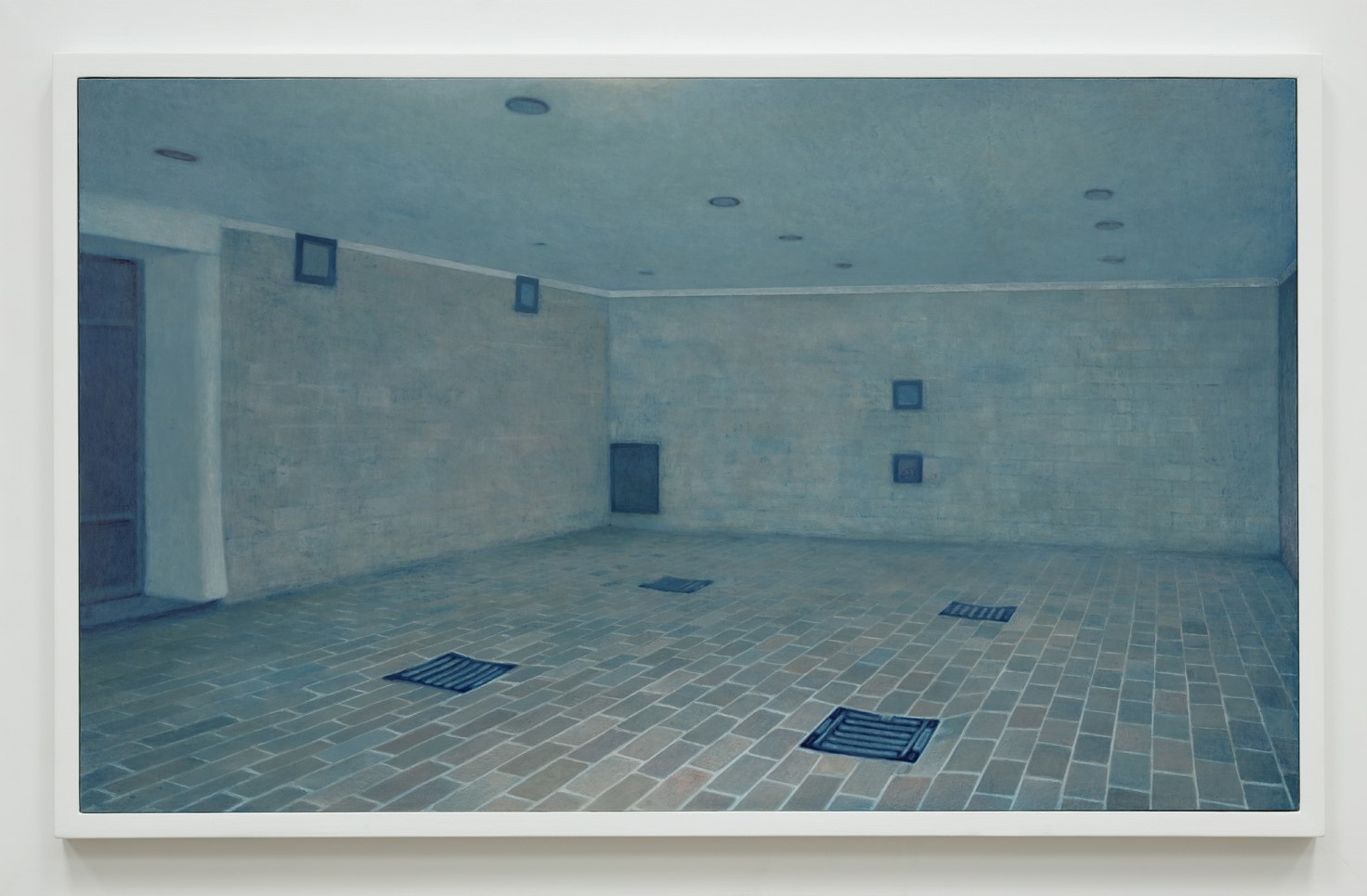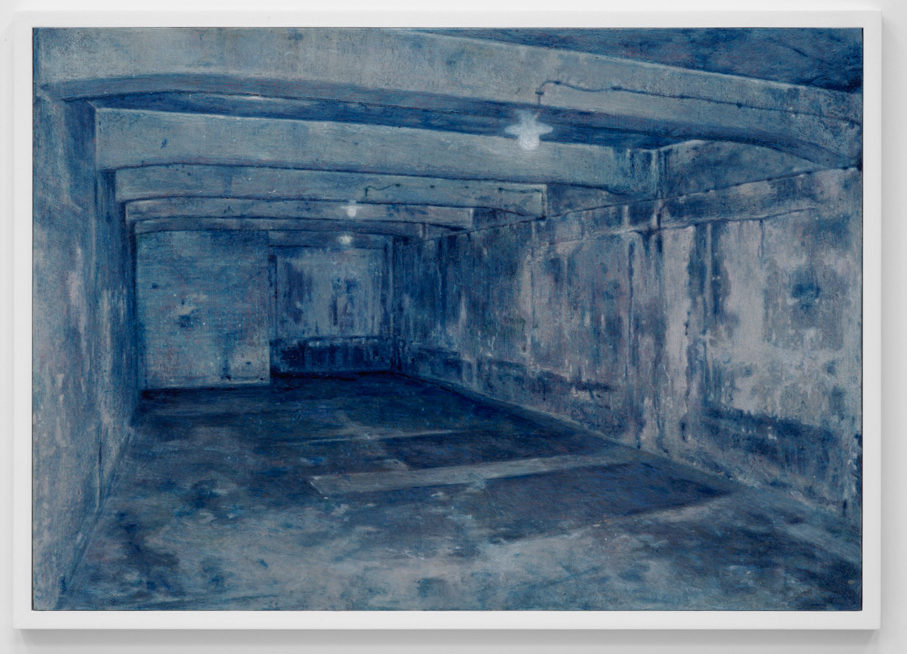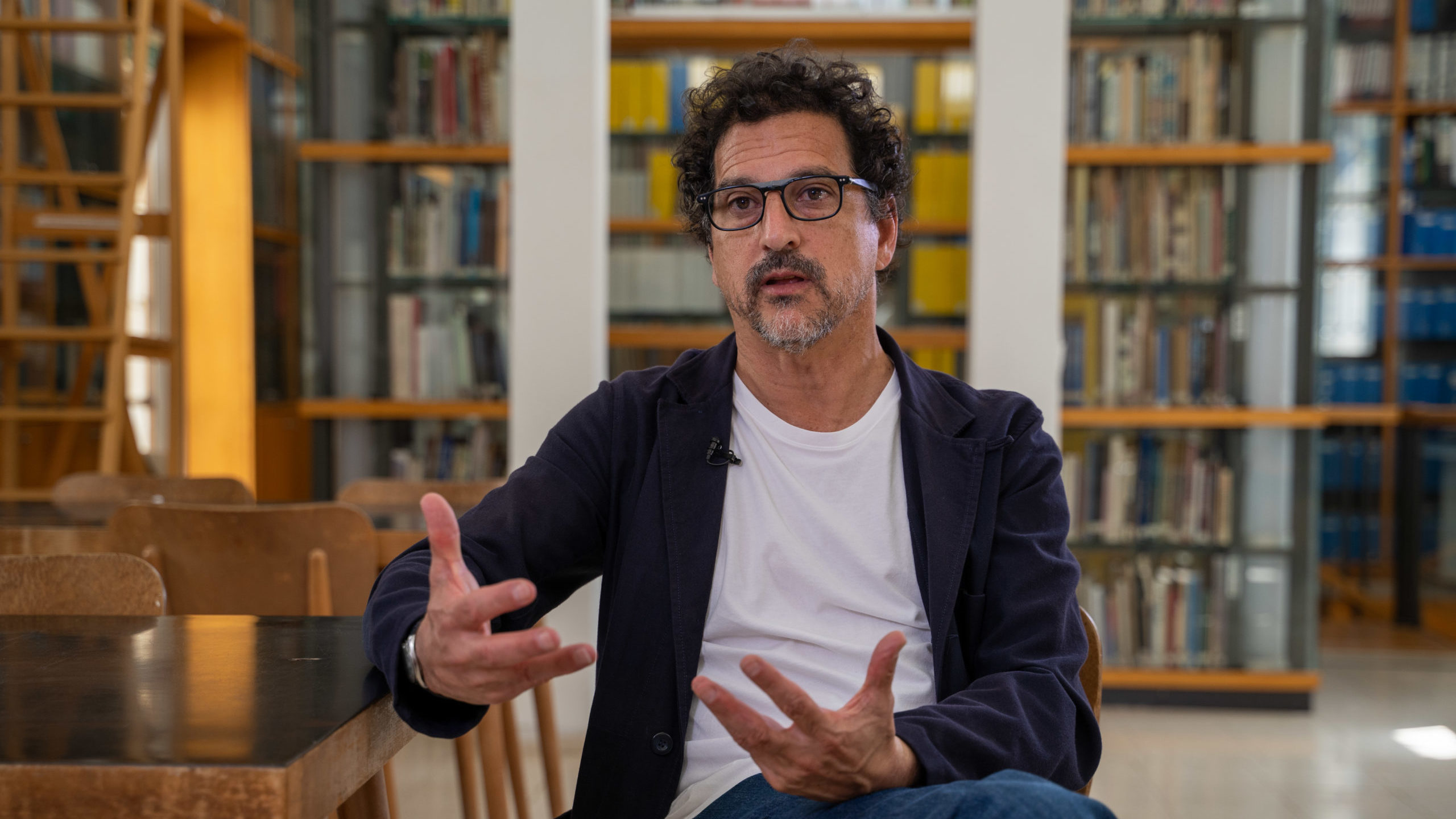Prussian Blue: Artist Explores the Color of the Holocaust
In new exhibit at Israeli museum, Mexican Jewish artist Yishai Jusidman pushes the boundaries of artistic representation
Does the Holocaust have a color? Mexican Jewish artist Yishai Jusidman seems to think so.
Ahead of Yom Hashoah, Israel’s Holocaust Remembrance Day, the Mishkan Museum of Art in the northern Israeli kibbutz of Ein Harod has put on a hard-hitting exhibition that explores the boundaries of artistic representation.
Titled “Prussian Blue,” the show was curated by Cuauhtémoc Medina and features dozens of paintings by Jusidman.
“The general consensus in the art world community is that the Holocaust cannot be represented,” Jusidman told The Media Line during a recent tour of the exhibition.
Born in Mexico City in 1963, Jusidman currently resides in Los Angeles.
The show is named after a popular pigment used by artists: a rich, dark blue that was first synthesized at the turn of the 18th century in Berlin. It soon became the main color of the Prussian army’s uniforms and continued to be worn by German soldiers ceremonially up until World War I.
It also unexpectedly became linked to the extermination of European Jewry during the Holocaust.
The Nazis used Zyklon B, a cyanide-based pesticide, to systematically murder over a million people—mainly Jews—in gas chambers. Through his research, Jusidman found that this pesticide left colored traces on the walls of the chambers that remain visible to this day.
This chemical compound ferrocyanide became an actual link between the discipline of painting and the crimes committed in the Holocaust. When I found this out, immediately I realized that this is a link that I was looking for
For Jusidman, the distinct color came to embody the Holocaust and became the lens through which he—and by extension viewers—could examine the horrors of the past.
All of the paintings in the exhibition at the Mishkan Museum of Art revolve around that signature Prussian blue pigment.

Yishai Jusidman’s ‘Dachau’ (2010-2012), a painting depicting a gas chamber at Dachau concentration camp. (Courtesy)
“This chemical compound ferrocyanide became an actual link between the discipline of painting and the crimes committed in the Holocaust,” Jusidman said. “When I found this out, immediately I realized that this is a link that I was looking for.”
The paintings on display range from figurative works showing gas chambers, concentration camp buildings and haunting landscapes, to completely abstract art pieces.
One of the highlights of the show is a large acrylic painting called “Haus Der Kunst” (2012). It depicts a museum of the same name in Munich that the Nazis constructed in 1937 in order to showcase what they regarded to be Germany’s finest art (in contrast to the likes of Picasso or Matisse, whom the party deemed to be degenerate).

Yishai Jusidman’s ‘Haus Der Kunst’ (2012). (Gil Mezuman)
Interestingly, while the Nazis were busy attempting to elevate so-called Aryan culture, the Jewish pioneers living in kibbutz Ein Harod decided to build a museum of their own that very same year.
Displaying a painting of a museum dedicated to Nazi-approved art within an Israeli museum devoted to Jewish and Israeli art creates a fascinating juxtaposition, the irony of which is not lost on the museum’s chief curator.
“The Nazis built a museum based on race and showing German art, while those in Ein Harod built a museum to preserve traditions, culture and Jewish identity,” Yaniv Shapiro, chief curator of the Mishkan Museum of Art, told The Media Line.
“When we see this artwork within the exhibition, we understand that what interests Yishai as an artist is, on the one hand, to talk about the Holocaust, and, on the other hand, to look at the connection between the Holocaust and art,” he said.

Jusidman’s ‘Auschwitz’ (2011). (Courtesy)
Though the exhibition is still fairly new, so far the public response has been overwhelming. According to Orit Lev-Segev, director of the Mishkan Museum of Art, many younger visitors are bringing their older relatives to come and see it.
“We only opened the exhibition last week and the impression is beautiful [and] enormous,” Lev-Segev related to The Media Line.
Most of Jusidman’s paintings are based on photographs that he found in archives, online and in books. However, shortly after he began the series he decided to visit many of the camps for himself.
After touring these sites in Poland, Germany and Austria, he then began to paint several beautiful landscapes of the areas surrounding the camps.
“Within the perception of the viewer there’s kind of like a clash between our attraction to the beauty of the paintings and our repulsion to the subject,” Jusidman explained. “Because the Holocaust is such an extreme event within human affairs it really challenges the capacities of art to convey, portray, [and] engage in general.”

A painting depicting a landscape close to Dachau. (Courtesy)
Over the course of nearly seven years (2010-2016), Jusidman produced some 50 paintings. It was by far the longest time he had spent on a single series, he said.
To bring it to a close, the artist decided to create large-scale monochromatic paintings that are reminiscent of Mark Rothko’s color field art. In the final exhibition room, the viewer finds themselves surrounded by three of these gargantuan blocks of color—one on each wall—which are covered in so many layers of Prussian blue paint that they appear to be nearly black.
In their dramatic opaqueness, these last paintings appear to both welcome viewers into their dark embrace and at the same time repel them with their impenetrability. The space acts as a memorial to the victims of the Holocaust, without however directly depicting them.
In this way, the Prussian blue pigment becomes indelibly linked to the memory of the Holocaust.
“I think the series engages in a way that I hope is measured,” Jusidman affirmed, adding that the next stop for the series would be in Buenos Aires, Argentina.
“It allows us to understand or appreciate what can be done by leaving aside what cannot.”

